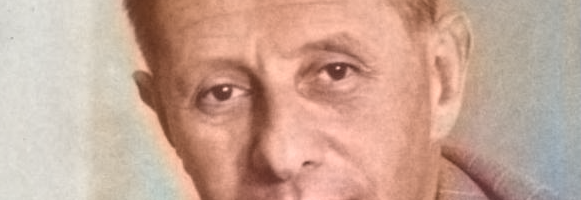The Hopf conjectures were first formulated by Hopf in print in 1931. The sign conjecture claims that positive curvature compact Riemannian 2d-manifolds have positive Euler characteristic and that negative curvature compact Riemannian 2d-manifolds have Euler characteristic with sign (-1)d . The product conjecture claims there is no positive curvature metric on S2 x S2. Indeed, in four dimensions, there are only two positive curvature manifolds known which are simply connected: the 4-sphere and the 2-dimensional projective plane. (There is then also the non-simply connected projective space P4.)
Here is a write-up showing why I got interested in the problem. It deals with how to formulate the questions in the discrete. Integral geometry is the key.
[Update: January 19, 2020: A bit more about index expectation [PDF], but only in the classical differential geometric case: it looks promising to look more at the index expectation in the case when M is a manifold with boundary. If M is a convex polyhedron inside an open set of the manifold we are interested and part and embedded in a larger dimensional Euclidean space E such that the boundaries of M are flat (cut by hypersurfaces in E). Now, the index expectation in the interior can be written as a product of sectional curvature expectations and has the right sign. Then there is curvature on the boundary which we hope to be located on vertices the polyhedron or to understand. Now, if different polyhedra are glued together, the curvature should disappears. It looks therefore reasonable that for any manifold with positive curvature a piecewise smooth function K(x) exists which is positive and such that the integral $\int_M K(x) dV(x)$ is the Euler characteristic of M and is positive because $ K(x) = \prod_k K_k(x)$ is product of index expectations in different directions. This is worth looking a bit more closely, even so it probably will not work. I try to keep a bit track of the ideas here: ]
[Blog Update, January 20, 2020: here is a bit of a time line: on December 24, 2019, we started to pursue the approach of constructing K a product of sectional index expectation curvatures Kk. Writing this down looked at first promising. Initially the believe was that a partition of unity could glue things. Around Jan 2 it became clear that one really needs a global coordinate system to work and that a partition of unity gluing can not be controlled in the intersection. Things needed to be kept local this write-up shows this . An other reason for the need of locality is explained later. Then came the idea to use polyhedra (manifolds with piecewise linear boundary) in order to to a better interface between different cells. This is reflected here [PDF]. While writing that down, the hope was to get the boundary curvature located on the vertices of the polyhedron (which would simplify gluing). It looks as if this is not possible however. Now, on January 20, the most promising thing is to average the curvature in each patch also over all coordinate systems to get a coordinate independent boundary contributions. The curvatures are non-local also at the boundary but seems positive when integrating over all frames (a boundary point has at least one of the coordinates zk at the boundary). If M is a polydisc of small geodesic discs, then the boundary curvature is positive everywhere as a product of interior sectional curvature averages and a boundary average. If two such pieces are put together, then the Euler characteristic changes from 1+1 (two separate contractible pieces) to 1 (one contractible piece). This suggests that the total interior curvature we get rid of is 1 like what happens in the usual “Gauss-Bonnet-Chern with boundary” case. But does that mean that one can just discard the interior boundary part? It seems so, as each Morse function f constructed in one part can be completed with one in the other part. This does not mean that the interior product expectation curvatures K(x) match up at the interface (the new function is only piecewise continuous) but it means that we can get rid of the boundary contribution and have the Gauss-Bonnet relation in a larger part. This is still a local argument but if each interface works independently, we should have it globally. This needs more study. ]
Here are some slides about the conjecture:
Postscript: The slides conclude with a remark that a few math teachers of mine at highschool and college were descendants of Heinz Hopf. This has to be understand in the sense of math genealogy. Counting “children” and `grandchildren” of Hopf (writing a PhD thesis means being a kid), there are at least 10, starting with my High school teacher Roland Staerk, one of the grand kids of Hopf. In our time, our high school class stayed together for the entire time and usually also kept the teachers for the entire school time.]
0 1 2 Mathematical subject
---------------------------------------------------------------
Hopf -> Eckmann -> Staerk (Highschool Schaffhausen for 4 years)
-> Knus (Algebraic Geometry)
-> Jeger (Geometry, Diff Geometry)
-> Mislin (Lie groups, Seminar)
-> Stiefel -> Henrici (Numerical Analysis)
-> Specker (Linear algebra I, II, Logic, Seminar)
-> Lauechli (Calculus I,II, Model theory, Analysis)
-> Engeler (Topology, Computation, CompAlgebra)
-> Stammbach (Algebra I,II)
-> Huber -> Blatter (Banach algebras)

